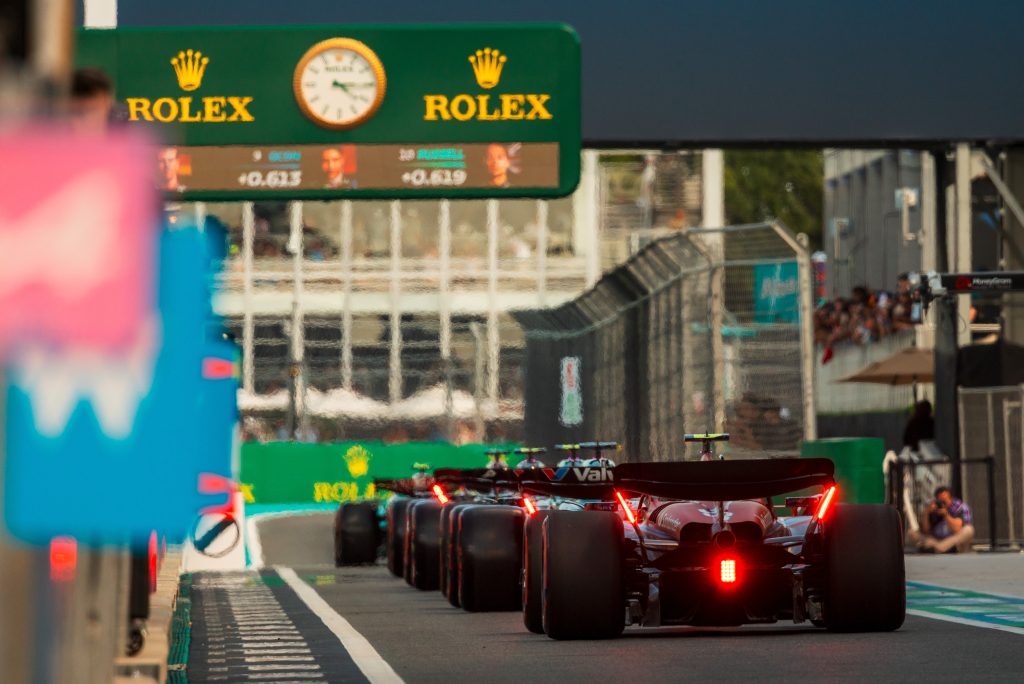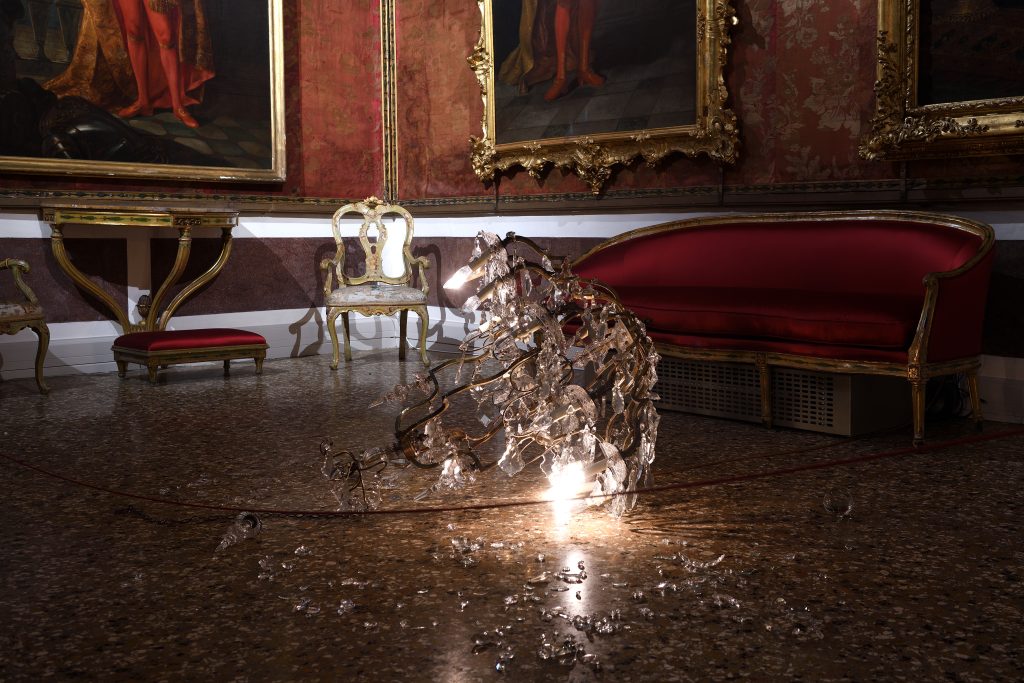The Pulse of the City: Culture Lab Detroit 2018
Insight into the Motor City’s future with consideration for the past

This past week signaled the onset of Culture Lab Detroit—the annual series of events that magnify the pulse of the city. Organized by Jane Schulak, the organization’s director, and led by community-engagement specialists Ingrid LaFleur (former mayoral candidate and current artist and activist) and Bryce Detroit (entertainment justice activist and founder of Detroit Recordings Company), guests–including life-long Detroiters, visitors, artists, musicians and press alike—converge on the places Culture Lab deems most noteworthy. Whether it be a panel discussion at the Senate Theater, a guided tour of the Oakland Avenue Urban Farm or a visit to Dabls’ African Bead Museum, these spots thrive in the nooks and crannies of the city—not the lavish new sports stadiums or the ritzier city-funded projects but passion-driven destinations that make Detroit’s cultural resurgence so exciting.

Oakland Avenue Urban Farm
The Oakland Avenue Urban Farm, headed by Jerry Hebron and her husband, is a community-oriented farm just blocks from the city’s Eastern Market. The farm—with a good-hearted seal of approval from the city—has acquired foreclosed land in the neighborhood with the intention of developing the space into a formidable source of healthy foods, economic development and sustainability. With the help of Detroit-based design and architecture firm Akoaki, this plan has been mocked up as proof of concept for further development and funding. The farm, at its full-scale size, would service thousands—with demand-style farming (in which crops are grown based on the community’s culinary habits)—and create a handful of jobs for nearby residents.
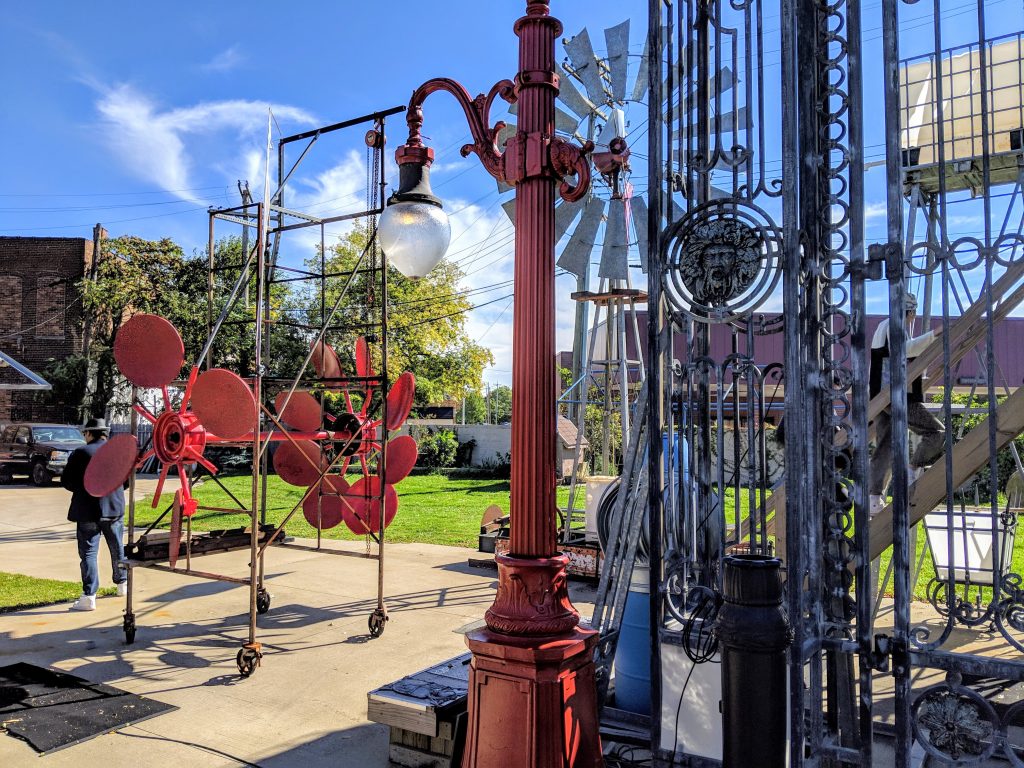
C.A.N. Art Handworks
The award winning design studio, led by German-born master craftsman Carlos Nielbock, specializes in architectural and functional metalwork. But, summating the work Nielbock does as merely design work undermines his efforts; he’s using discarded material and infrastructure from Detroit’s collapse to prove that adaptive reuse is an applicable technique for city-building. His largest proof of concept is his windmill—a wind-catching device made from trashed satellite dishes, the hub and axle of an old car and a few other left-for-scrap parts. Since moving to Detroit in 1984, Nielbock has worked on the Fox Theatre, the Spirit of Detroit Statue and the Hurlbut Memorial Gate—but, in his studio space the Culture Lab team gained us access to, he’s future-focused and sustainable (and hoping to make landmarks that generate power next).
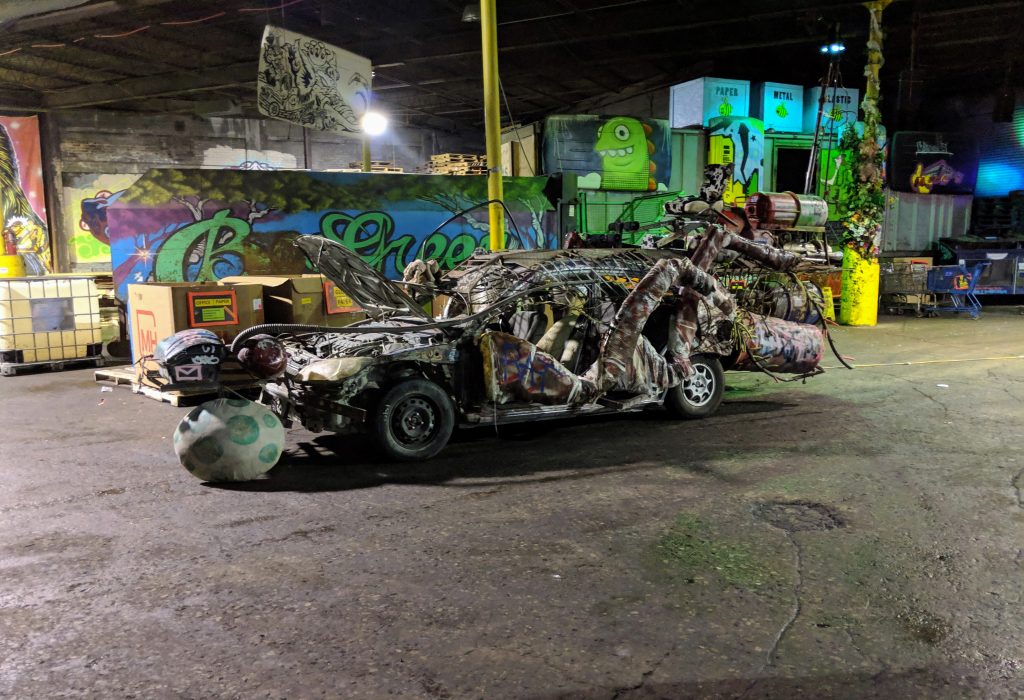
Make Art Work, Destroy Compound and Recycle Here!
What began as the city of Detroit’s first recycling compound has turned into Make Art Work, the Lincoln Street Art Park and Destroy Compound. The three exist on the site of a former auto factory—a fitting home for a band of adaptive artists and metalworkers. The Recycle Center and Make Art Work, both overseen by Matt Naimi (in collaboration with many), are home to a rotating collection of art. Highlighted by pops of color on painted tires, walls, remote-controlled elephants made from scrap material and more, the complex is a second home for unwanted material. Items claimed from the drop-offs and donations then become art.

Mirage by Doug Aitken (inside the State Savings Bank)
Doug Aitken‘s “Mirage” has found a new home in the grand hall of the old State Savings Bank Building—with safe still intact. The building has not been open in decades—and this exhibition acts as bait for potential investors. The project is a collaboration between Aitken and lighting-designer Andi Watson and will be on exhibition for at least four months, the set-up team mentioned. It’s hard not to see “Mirage” as metaphor; it’s a futuristic rebuild—this cultural resurgence—inside a pre-existing, history-rich structure—Detroit.
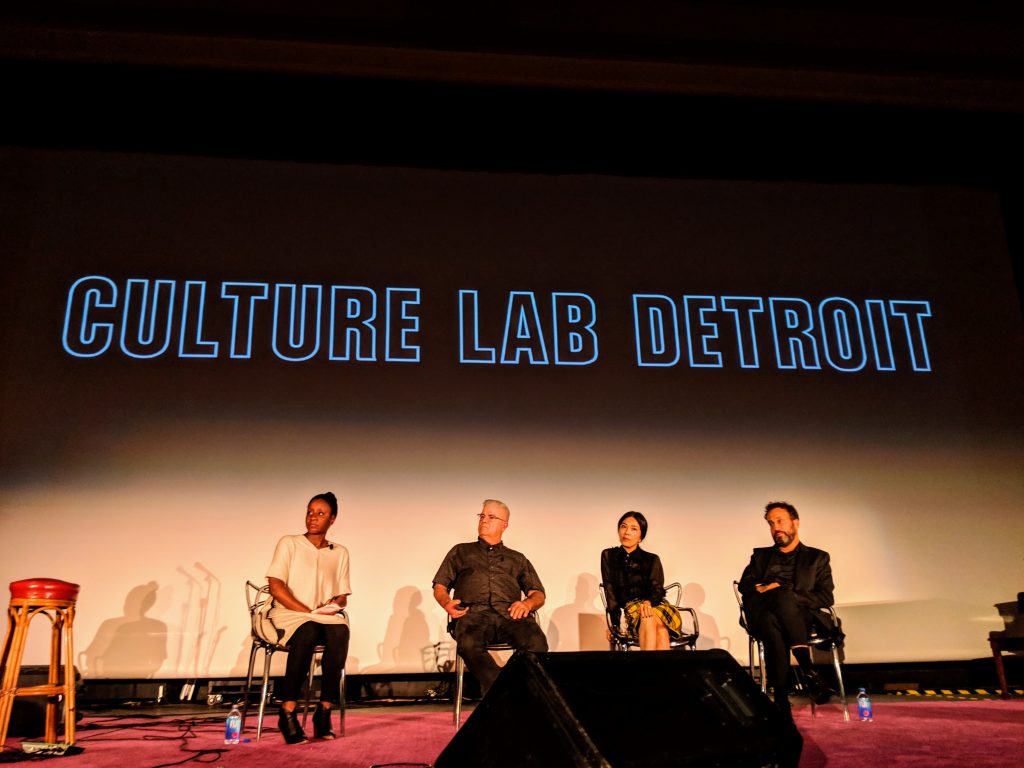
“The Aesthetics of Tomorrow” Panel
The Culture Lab-hosted panel comprised of moderator Yesomi Umolu, Survival Research Labs founder Mark Pauline, Forensic Architecture head Eyal Weizman and artist Anicka Yi, focused on how the future will look. The talk was introduced by Robocop himself, Peter Weller, as he spoke on the “crisis of beauty.” That thread continued throughout the night as panelists discussed how art will exist when technology and science are the primary pillars of expression, whether or not AI will even care about art and whether art can kickstart environmental or activism efforts. “Would AI have any interest in art?” Yi asks. “My inclination is no,” she continues. Later, she divulges her most-feared theory on the extinction of both art and the human species: “Are homosapiens just here to usher in the next superior species? Is there mortality in our art then?”

Dabls’ Bead Museum
Olayami Dabls has been at the forefront of Detroit’s cultural renaissance as long as there has been one—though the marker for that transition is flexible. But, Dabls’ impact on black communities—specifically those engaged with art and activism in the city—isn’t. He’s become a sort of “O.G.” figure for the likes of Bryce Detroit, Ingrid LaFleur, Uri House (who is using mesh technology to provide WiFi to the 40% of Detroit without internet), Jerry Hebron and Tiff Massey—among many others. All of these figures are vital to Detroit’s future. That said, as we toured Dabls’ space, his lessons and his guidance resonated with visitors just as much as the people he sees every day.
Images by Evan Malachosky







